
June Birthstones: Pearl, Alexandrite & Moonstone
There are only two months with three official birthstones, and June is one of them! What are the 3 gemstones for June? The official June birthstones are moonstone, pearl, and alexandrite.
June was called Junius or lunius in ancient Rome, named after the goddess of marriage, Juno, or the Latin iuniores meaning "youth.”
Ancient celebrations in June included the Rosalia (festival of roses), Vestalia (honoring goddess of the hearth Vesta and re-purifying Rome), and the summer solstice (first day of summer).
The summer solstice is still celebrated today, along with modern June holidays like Father’s Day, LGBTQ+ Pride Month, and International Children’s Day.
June represents excitement, balance, and rejuvenation. It’s also associated with marriage, with wedding season peaking in June.
Reflecting these ideals are the three June birthstones: alexandrite, pearl, and moonstone. Today, we’ll go over the history, properties, and allure of these June birthstones.
{{video:https://www.youtube.com/watch?v=v2PJNAbPgU8}}
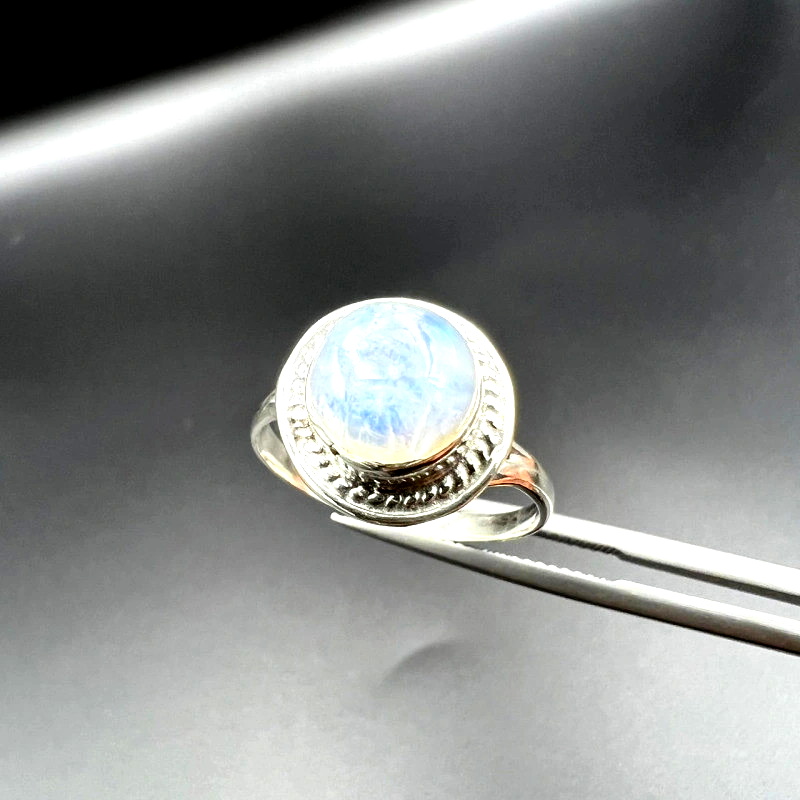 Pictured above: Moonstone ring
Pictured above: Moonstone ring
Historical & Cultural Significance of June Birthstones
You’re probably wondering: why are there 3 birthstones for June? Well, there weren't always three.
June Birthstone Changes Over Time
Early birthstone lists derived from Biblical texts interpreted June birthstones as agate or emerald, now May birthstones.
Kicking off formalized modern birthstone lists, Tiffany & Co. published a pamphlet of “Gregorian Birthstone Poems” in 1870, credited to an “unknown author,” with pearl for June.
The first official standardized list, created by the National Association of Jewellers (now the Jewellers of America) in 1912, listed pearl first with moonstone as the alternative. This listing was also reflected in the 1937 UK list from the National Association of Goldsmiths.
The Jewelry Industry Council of America modified the 1912 list in the 1950s to add alexandrite for June.
Why did June’s birthstone change? Alexandrite was a relatively new gem, and one theory is that jewelers believed alexandrite was more abundant than pearl, which is not true today.
Next, let’s look at each semi-precious gemstone’s individual history.
 Pictured above: 3rd-century ancient Roman gold hair ornament set with pearls, emeralds, and sapphires; Displayed at British Museum | Image credit: Vassil, Public domain
Pictured above: 3rd-century ancient Roman gold hair ornament set with pearls, emeralds, and sapphires; Displayed at British Museum | Image credit: Vassil, Public domain
Pearls in Ancient Civilizations and Mythology
The oldest written record of pearls dates back to 2206 BC, when freshwater pearls were gifted to Chinese royalty. The oldest known pearl jewelry dated around 420 BC is the “Susa Pearls” necklace. Archeological evidence also points to prehistoric mother of pearl uses in the Indus Valley and Sri Lanka.
Ancient Greeks associated pearls with grandeur, believing the birthstones formed from the tears of Aphrodite, the goddess of love who was similarly born from the sea according to myths. Similarly, ancient Japanese legends claimed pearls originated from the tears of mermaids or nymphs.
Ancient Romans called pearls margaritae or unio. They used pearls as status symbols, only worn by the wealthy and noble.
In ancient Egypt, pearls were linked to Isis, goddess of healing, and placed in tombs. One famous story is that Cleopatra won a bet with Marc Antony by putting one of her pearl earrings in vinegar and drinking it!
One Hindu legend says that pearls were fallen lunar dewdrops that fell from the moon. Another Hindu myth about the pearl’s origin is that the god Krishna found the first pearl and gave it to his daughter as a wedding gift to protect her from becoming a widow and ensure a successful, long marriage.
Additionally, pearl origins in Vedic texts were that Earth’s waters and divine energy conceived the pearl, then fertilized it with lightning.
In Islam, the Quran describes pearls as adorning Paradise as fruits and crowns given to those entering heaven.
Other interpretations of this June birthstone’s meaning included protection from fire in ancient China and representation of purity in Europe.
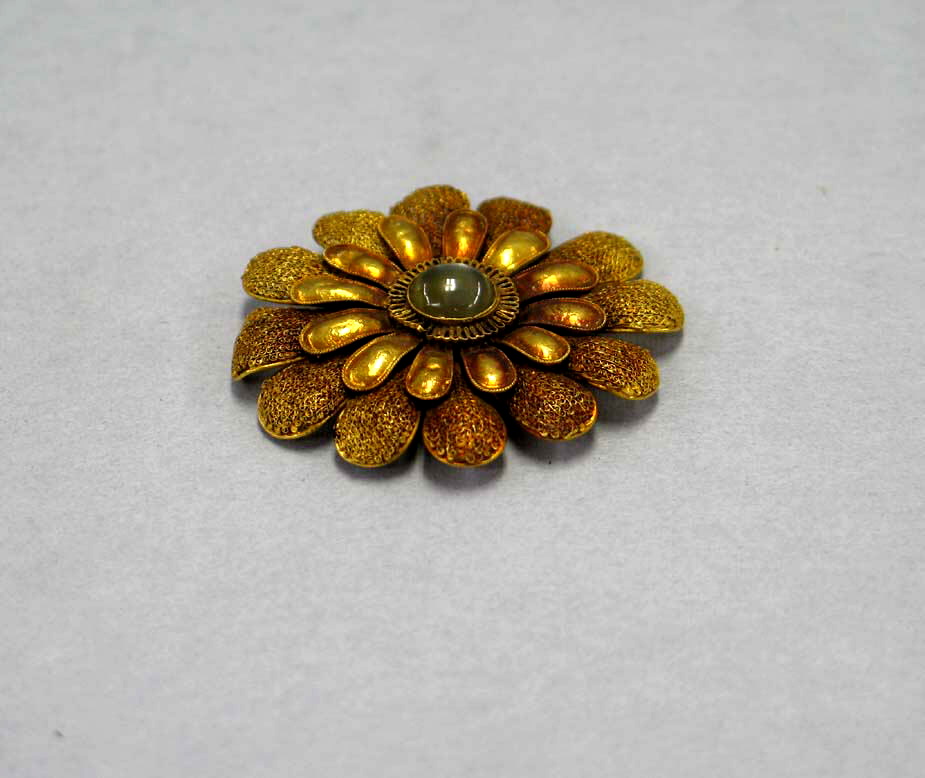 Pictured above: Chinese gold ornament with moonstones, dated 960-1279 Song Dynasty; Displayed at Metropolitan Museum of Art | Image credit: Met Museum, Public domain
Pictured above: Chinese gold ornament with moonstones, dated 960-1279 Song Dynasty; Displayed at Metropolitan Museum of Art | Image credit: Met Museum, Public domain
Ancient to Modern Moonstone History
Moonstone’s name is inspired by its adularescence, appearing to glow from within like soft moonlight.
Ancient Roman legends say moonstone formed when beams of moonlight hardened and was gifted by moon goddess Diana. They gazed into the stone to see Diana and receive her love and wisdom.
Ancient Greeks called the stone Aphroselene, a portmanteau of Aphrodite and moon goddess Selene. They also associated moonstone with Hecate, goddess of magic, and Artemis, goddess of the hunt and chastity.
In ancient India, moonstones were said to glow or dim from the forehead of the moon goddess Chandra (or moon god Ganesh) with the moon’s waxing or waning phases.
According to an Asian myth, blue moonstones wash to shore every 21 years. Ancient East Asians hung moonstones in trees to promote bountiful harvests and believed the gem’s shifting internal light indicated a spirit living inside.
Travelers also used moonstone talismans for protection, inspiring the June birthstone’s nickname “traveler’s stone.”
 Pictured above: An excellent, classic reference example of alexandrite from Urals Region, Russia, with stout form, some edge wear, internal gemminess, but nevertheless shows color change; Included with label dated to 1850 | Image credit: Rob Lavinsky, iRocks.com – CC-BY-SA-3.0
Pictured above: An excellent, classic reference example of alexandrite from Urals Region, Russia, with stout form, some edge wear, internal gemminess, but nevertheless shows color change; Included with label dated to 1850 | Image credit: Rob Lavinsky, iRocks.com – CC-BY-SA-3.0
Alexandrite's Journey from Russia to the World
Alexandrite is the most recently discovered June birthstone. The color-changing red and green gem was discovered in Russia’s Ural Mountains in 1834 and named after Alexander II, the soon-to-be Czar upon his upcoming 16th birthday.
Stories differ on who discovered and named alexandrite first. It was either Finnish mineralogist Nils Gustaf Nordenskiöld, Ural Mine manager Vasilevich Kokovin, German mineralogy professor Gustav Rose, or Russian mineralogist Count L.A. Perovskii. Regardless, Count L.A. Perovskii gave Alexander II the gem for his birthday on April 29.
Russia was the only source, although their mines were nearly empty by the 1890s. Brazil became another source in 1987, followed by Sri Lanka and Zimbabwe.
Russian alexandrite became a symbol of prestige and national pride, coincidentally reflecting Russian military colors. Alexander II was reported to wear an alexandrite ring talisman daily.
Other cultures interpreted the June birthstone’s color changes as indicators of danger.
History? Check. Now we’ll look closer at these birthstone’s colors and unique traits.
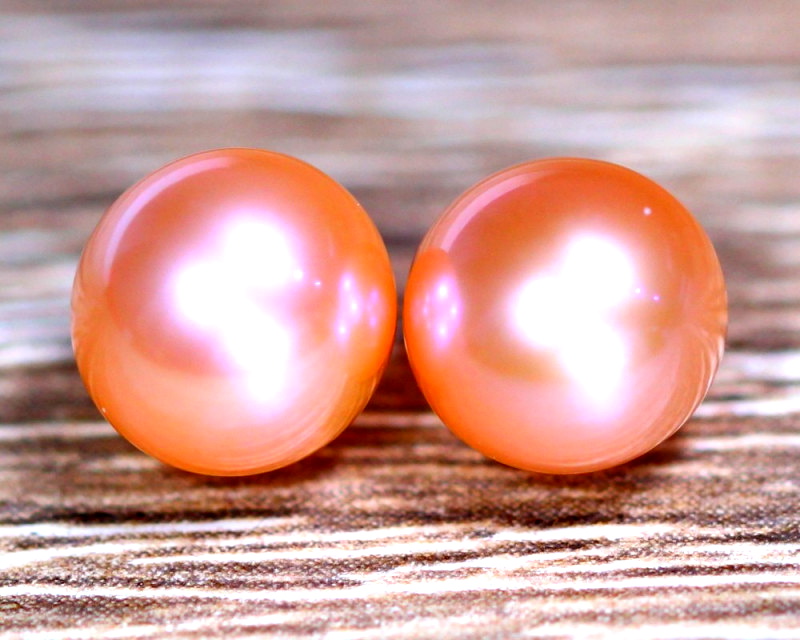 Pictured above: Pink akoya pearls
Pictured above: Pink akoya pearls
Pearls: The Gems of the Sea
Arguably the “classic” June birthstone, pearls are inarguably unique. For one, they’re mineraloids (not minerals) and one of few organic gemstones, meaning gems made by a living organism.
In this case, pearls are made inside mollusks when an irritant like sand gets into the creature’s shell. The mollusk secretes layers of nacre around the irritant. The nacre is composed of calcium carbonate (calcite, aragonite, or both). The built-up nacre layers create the signature “pearlescent” luster.
The rarity of this June birthstone is exclusive to natural pearls, which grow in the wild without human intervention. Most pearl gemstones today are cultured pearls, which grow the same way but the irritants are inserted by humans on pearl farms.
Natural pearls are typically small and irregularly shaped, while cultured pearls are often round or close to round. You can always verify your pearl birthstone’s origin by sending it to a lab like the GIA.
Pearl Types & Value
Some of the most popular types of pearls are:
Akoya: First and usually highest-quality cultured pearl; Slower nacre layer build-up, meaning better luster and rounder shape; Often bleached & dyed white with rose overtones
Freshwater: Formed by freshwater mollusks, usually cultivated; Typically thicker nacre, more irregularly shaped, and lower luster but fancier colors than saltwater pearls
Saltwater: Formed by saltwater mollusks, usually cultivated; Historical standard for beautiful pearls
South Sea: Cultured from silver- or gold-lipped saltwater oysters; Thicker nacre & larger than Akoyas; Usually white, cream, or golden color
Tahitian: Cultured from black-lipped saltwater oysters mainly in French Polynesia; Only naturally black pearls, but but often dark green or gray; Can be white, blue, silver, purple, or yellow; Display iridescence called “orient”
The biggest value factor is natural vs. cultured — natural pearl June birthstones are significantly pricier.

Alexandrite: The Chameleon Gem
Alexandrite is a chrysoberyl variety where some of the aluminum is replaced by chromium. It’s known for being color-changing, caused by those chromium impurities.
What is this June birthstone’s color? The best alexandrites are emerald-green in daylight and reddish-purple under incandescence, inspiring the moniker “Emerald by day, ruby by night.” Most of these are Russian.
Other color-changes include yellow or peach to hot pink or blue-green to magenta. Sri Lankan alexandrite is often olive-green, while Brazilian alexandrite is often paler.
The main part of alexandrite’s value is the purity, degree, and proportion of color-change.
Cat's eye alexandrites are especially rare and valuable.
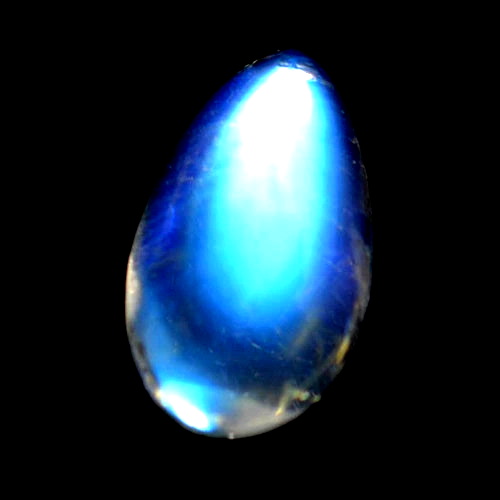
Moonstone: Luminous Beauty & Colors
Among the three June birthstones, moonstone is most accessible but no less stunning.
Moonstone has alternating, thin layers of feldspars albite and oligoclase or orthoclase. When light enters these layers, it causes moonstone’s signature floating, internal glow called “adularescence.”
The best moonstones are colorless with pure blue adularescence. But the June birthstone’s color also includes shades like peach, green, and orange.
Most moonstones are cut into cabochons, but faceting moonstones can hide flaws and enhance sparkle. Other moonstone cuts include beads and carvings.
That covers mineralogy and appearance, so it’s time to examine June birthstones and their meanings.
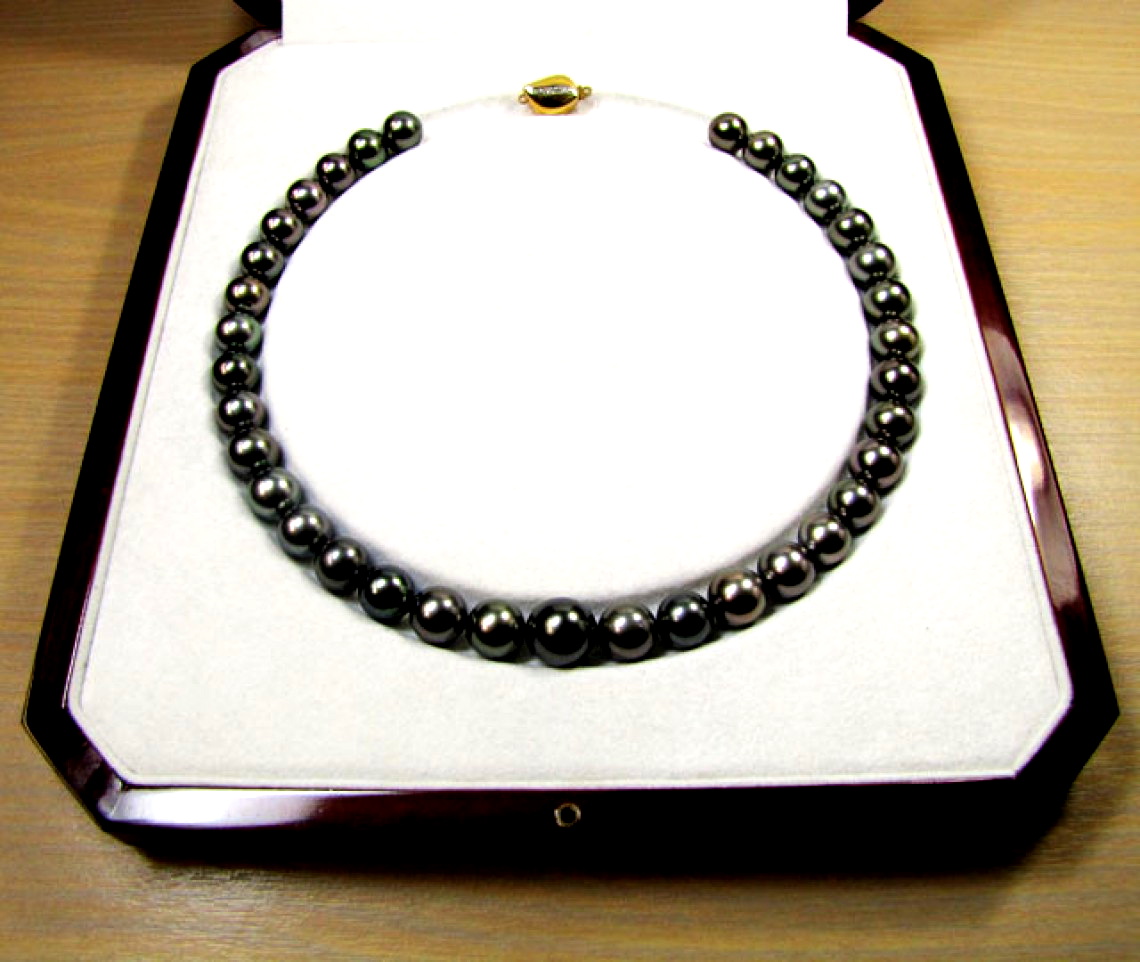 Pictured above: Tahitian pearl necklace
Pictured above: Tahitian pearl necklace
Pearls: Symbolism and Significance
Throughout history, pearls have been associated with femininity, wisdom, and transformation.
Femininity
The pearl’s ethereal appearance and aquatic origins have inspired associations with the moon, femininity, and water. The moon and tides are tied to traditionally feminine ideals of tapping into one’s changing emotions.
Pearls’ lunar side is believed to enhance intuition and connect you to spiritual realms. Additionally, pearl healing stones are traditionally used for fertility, hormone imbalance, and easier childbirth.
Wisdom
The attachment between pearls and knowledge is exemplified in the phrases “pearls of wisdom” meaning sage advice or “do not cast pearls before swine” meaning wisely not offering something valuable to those who won’t appreciate it.
In the Bible, pearls usually represent the value of wisdom. Hindu, Taoist, and Buddhist philosophies mention “flaming pearls” as symbolizing spiritual wisdom. Some ancients believed pearls contained life’s lessons and guided the dead through the afterlife.
The June birthstone’s “hiddenness” and formation also represents wisdom gained from experience.
Transformation
Pearls take years to form, usually starting from a grain of sand and developing into a gorgeous gemstone. Unsurprisingly, these June birthstones represent transformation.
Quoting motivational speaker Susan C. Young: “The oyster has taken what was at first an irritation and intrusion and uses it to enrich its value.”
Ancient Asians believed pearls symbolized a soul’s journey to perfection. Tarot readers connect the pearl to The Fool’s journey as a path of self-discovery.
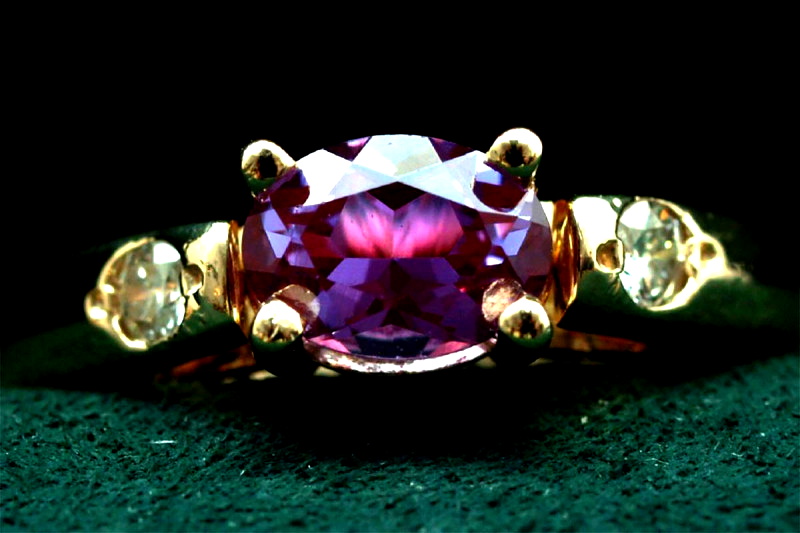 Pictured above: Alexandrite ring with accent diamonds | Image credit: Christina Rutz, Flickr, CC-BY-SA-2.0
Pictured above: Alexandrite ring with accent diamonds | Image credit: Christina Rutz, Flickr, CC-BY-SA-2.0
Alexandrite's Mystique and Metaphysical Properties
Alexandrite doesn’t have as much lore, but it’s still become meaningful.
Like pearl, alexandrite symbolizes transformation. The June stone is said to be rejuvenating, helping you embrace the changes of life.
The color-changing stone also represents balance, be it emotional balance, physical and spiritual balance, or simply remaining grounded.
Other associations with alexandrite include good fortune, success, and creativity.

Moonstone Meanings & Powers
Moonstone shares metaphysical properties with pearls, with ties to femininity, wisdom, and the moon.
Historically, magicians strategically used moonstones for spells based on the moon’s current phase. Many mystics use moonstone as a focus tool during meditation. Crystal healers recommend moonstone for treating insomnia.
Moonstone is also indicative of love and marriage.
One Indian tradition involves couples putting the June birthstone in their mouth during a full moon to see their future. Both ancient Greeks and Indians held beliefs that moonstones facilitated foresight.
For those without a partner, one legend said you could attract your true love by setting the intention with a moonstone during a full moon and keeping it with you until the next full moon.
Celebrating Life's Moments with June Birthstones
Wondering what the most popular June birthstone is?
For most jewelry, pearls are queen. However, alexandrite is more common for June birthstone rings, and moonstone is the most widely available.
Astrologically, what is the birthstone for June and Gemini? Alexandrite is the best June-born Gemini birthstone, fulfilling their craving for balance.
For June-born Cancers, moonstone and pearl tie perfectly to Cancer’s ruling planetary body (the moon) and enhance the sign’s natural intuition.
Gifting a June birthstone is a meaningful gesture for celebrating a loved one.
Options range from June birthstone jewelry to birthstone-encrusted rose decor (the June flower) to a painting of the giftee’s favorite June crystal.
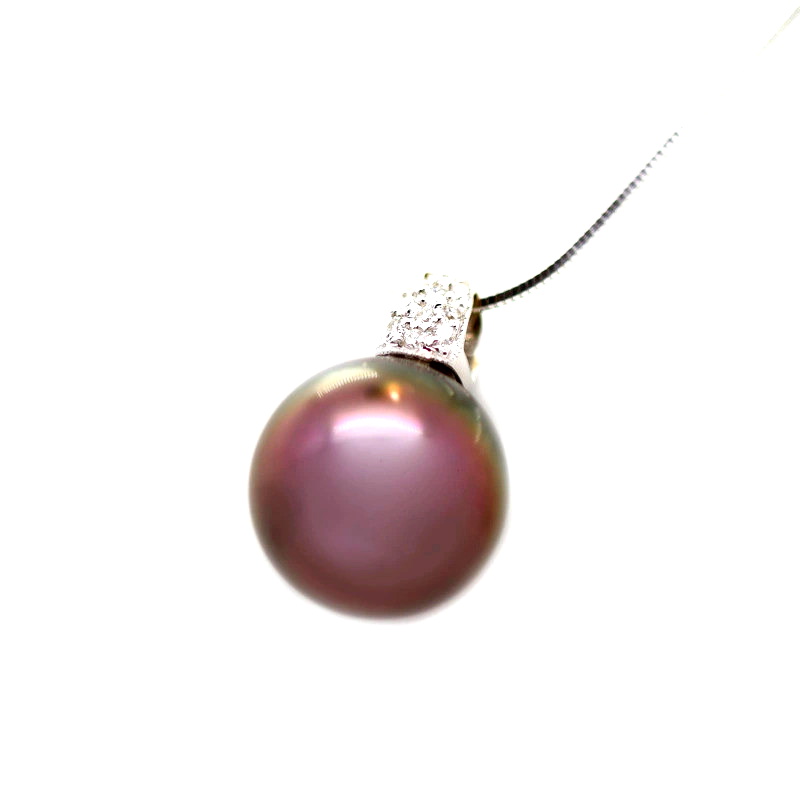 Pictured above: Cultured saltwater pearl necklace
Pictured above: Cultured saltwater pearl necklace
Which June Jewel is Your Favorite?
June represents love, excitement, and balance, which are exemplified by alexandrite, moonstone, and pearl. These gems each have their own appeal, plus their varied appearances and price points mean there’s a perfect June birthstone for any budget!
Find traditional and alternative June birthstones from our hundreds of gemstones available!
Search the Gemstone Encyclopedia
Related Auctions
Related Articles
Originally the Birthstones or gemstones were associated with a zodiac sign or the month of a individuals birth. Find out what your stone is and view the stones we have for sale
8th Feb 2021
There are dozens of quartz and chalcedony gems with various colors and patterns. Learn all about quartz properties and every type of quartz, from amethyst and agate to plasma and phantom quartz!
15th Oct 2020
Hackmanite is a pink to violet sodalite gem known for its unique color-change and luminescence. Learn why hackmanite is special, from its rare qualities to the types of hackmanite jewelry available.
28th Mar 2018
Latest Articles
Senarmontite is an uncommon antimony mineral mostly used industrially but occasionally collected as rare gems or pearly crystals. Find out all of the traits, uses, prices, and history of senarmontite.
27th Nov 2024
Tantalite is a group of red, brown, or black minerals containing the rare and valuable element tantalum. Discover the uses, history, prices, and properties of tantalite gemstones in this guide!
11th Nov 2024
Hodgkinsonite is a very rare collector’s gemstone known for its vibrant pink or purple hues, only found in New Jersey, USA. Learn hodgkinsonite’s prices, history, properties, and traits in this guide!
9th Jun 2024
Article Categories
How To's is where you will find helpful articles from gem Rock Auctions on how to cut gemstones, select gemstones and buy gemstones.
9 Articles







